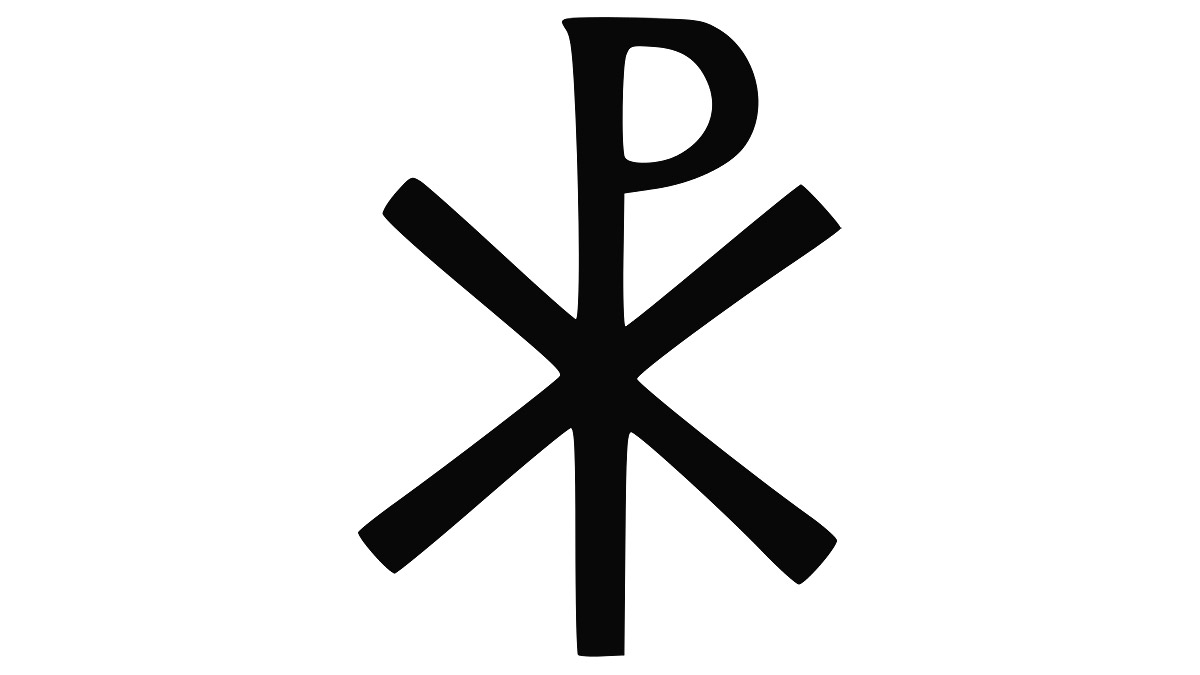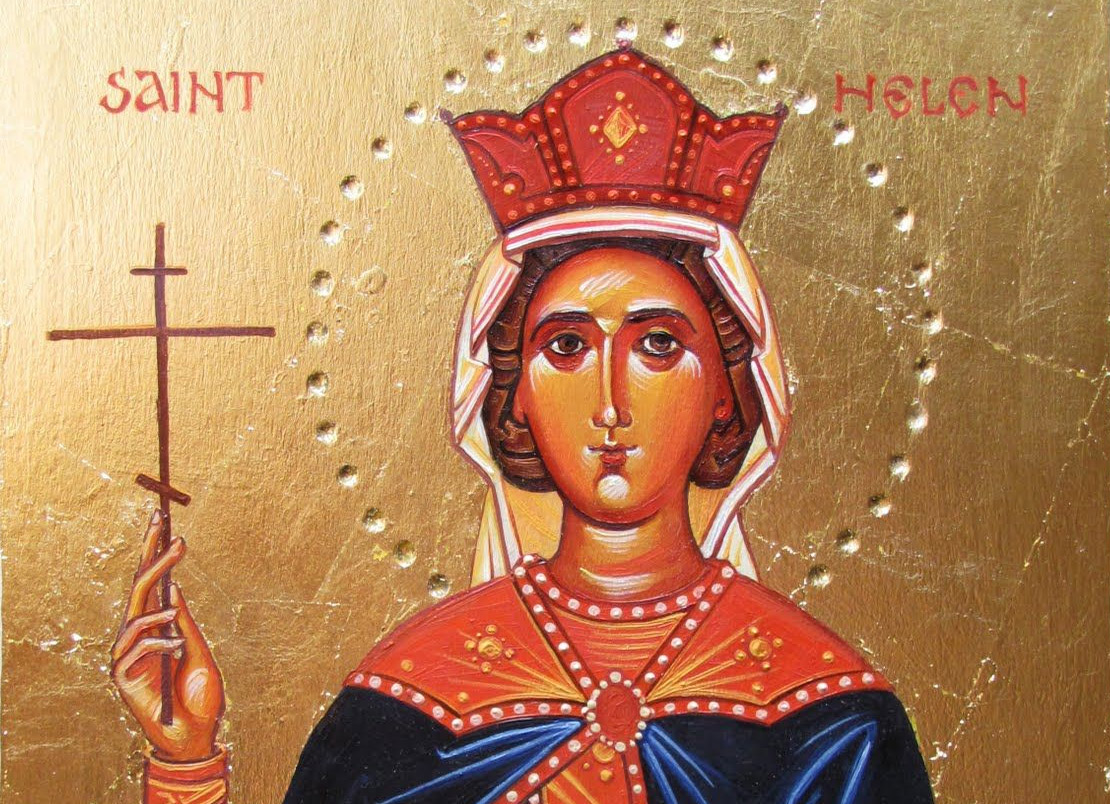Constantine was made Emperor of the Western and Eastern Roman Empire after he won the Battle of Milvian Bridge on October 27, 312. On the eve of the great battle, as told by Eusebius of Caesarea, a heavenly sign appeared in the sky. Constantine was told if he led the battle with that sign on the shields of his men, he would be victorious.
God Chooses Constantine
Constantine, ruler of the Eastern Roman Empire stood poised to fight against Maxentius, a fellow contender for the throne of Western Rome. Faced with superior numbers, Constantine was pondering his strategy when the vision appeared in the evening sky and a voice from the heavens spoke: “En toutoi nika” “In this sign you shall conquer.“
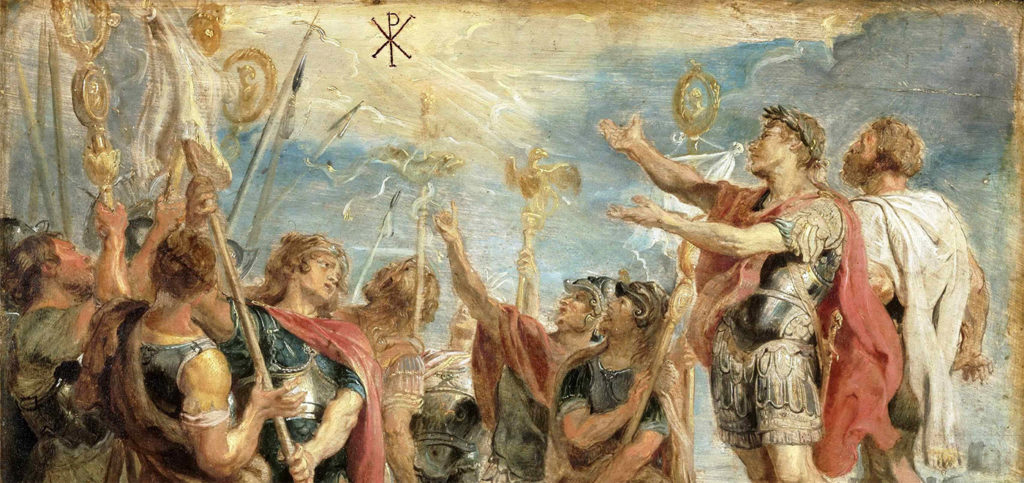
That very night, he ordered the Chi-Rho, the monogram of Christ, to be emblazoned on his army’s shields, believing that if he fought in the name of Christ the following day, he would be victorious.
On October 28, 312 AD the “Chi-Rho” vanquished the “Unconquerable Sun”, the pagan cult symbol of Mithras, protector of Constantine’s opponent and so changed the future of Christianity forever.
Constantine was already emperor of the eastern Roman empire; he now entered Rome the indisputable emperor of the west as well, making him emperor of the entire Roman Empire.
The Sign that led Constantine into battle in 312 AD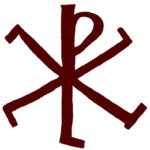 Chi-Rho, the Monogram of Christ
Chi-Rho, the Monogram of Christ
Constantine: Godfather of Christianity
Without Constantine, and his mother, Helena, the firm establishment of Christianity would have been much more difficult. The emperor approved mandates which forbade sacrifices at pagan shrines, called for universal respect of the Sabbath, and minimized the Imperial Cult (the worship of himself as a god). Without Constantine, Christianity would not have had enough protection and the chance to spread throughout the empire. Although Christians were still persecuted in some parts of the region during this time, it was not anywhere on the scale of the previous three hundred years.
Once Constantine became undisputed emperor of the whole Roman Empire, he proclaimed the Edict of Milan just a year later, giving Christians the right to practice their religion publicly. In 325AD, he called the First Ecumenical Council of all Christians.
The sign was …the Chi X and Rho P superimposed and stood for ‘Christos‘ in Greek is the Monogram of Christ. It was to become the universal sign of the triumph of Christianity for all Christians.
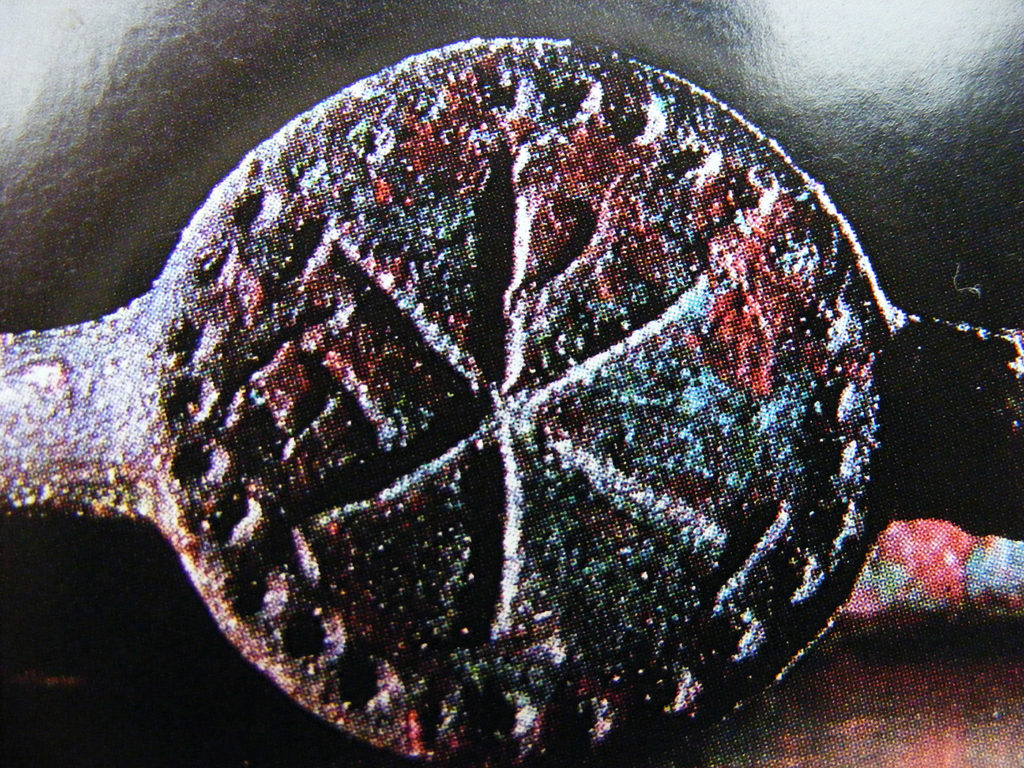
![]() Icon of Constantine the Great and his mother Helena
Icon of Constantine the Great and his mother Helena
Constantine, Helena & The Edict of Milan
His Christian mother Helena influenced her powerful son to make Christianity a public religion recognized by the Emperor and accepted throughout the empire. Constantine honored her wishes, and in 313AD, just one year after he became emperor he issued the Edict of Milan: all Christians were protected and allowed to publicly practice their faith.
Christianity is made the State Religion in 391AD
![]() It still took a full 66 years after the Nicene Council for Christianity to be adopted as the Roman Empire’s official religion under Emperor Theodosius I. During this interim, paganism was far from defeated, and in 360AD Emperor Julian [The Apostate] even made a concerted effort to re-establish pagan dominance at the cost of The Faith only 5 years before the Kourion earthquake and the family’s death.
It still took a full 66 years after the Nicene Council for Christianity to be adopted as the Roman Empire’s official religion under Emperor Theodosius I. During this interim, paganism was far from defeated, and in 360AD Emperor Julian [The Apostate] even made a concerted effort to re-establish pagan dominance at the cost of The Faith only 5 years before the Kourion earthquake and the family’s death.
By examining the dates of these events, one can see that the Chi-Rho was revealed thirteen years before the Council of Nicaea was called, and a full sixty-eight years prior to Christianity finally becoming the Empire’s only official religion.
So this ancient symbol does not in fact represent any one particular branch of Christianity because it predates the formal organization of Christianity itself, and thus any group’s claim to primacy. It is an Apostolic symbol for all Christians, rather than belonging to any one Christian sect.
THE CHRISTIAN CREED
The Christians had spread far and wide by the early 4th century. After the Edict of Milan there were many different groups of practicing Christians throughout the empire who were not all professing the same belief in the nature of Christ. Many Christian groups were accusing the others of heresy. There were often controversies among them that ended in heated arguments and physical fights.
Arius a priest from Alexandria started preaching what became known as the Arian Heresy in 318 AD. A schism was formed by great numbers of followers who held different beliefs on the nature of Christ and his divinity. Some followed Arian’s teachings; others were at odds with it. The eastern empire was in an upheaval caused by the various factions, and the pagans were laughing at the Christians.
325 AD…The Nicene Council
Though the emperor encouraged those with different points of view to settle the matter among themselves, they could not. Concerned by the continually worsening events, the ever-pragmatic Constantine, (though still not fully a Christian himself; he was baptized on his death bed) realized that an empire-wide assembly of bishops had to be called to settle once and for all who Jesus Christ really was.
At his expense, Constantine invited bishops to come to Nicaea to attend the First Ecumenical Council. Whether he anticipated the turbulent discussions, heated debates, and chaotic bouts is not known. What is known is that he forced Christians to decide, once and for all, what they believed.
Bishops Come from the Eastern and Western Roman Empire
Emperor Constantine invited 1,800 bishops of the Apostolic Christian Church from the Eastern and Western Empire to the Nicene Council in an effort to unify the Faith and to put an end to the incessant arguments and heresies that permeated Christianity. Despite the Imperial invitation only around 300 bishops, mainly from the East, attended. Cyprus was represented by three bishops at the Nicene Council in 325AD: Cyril, Gelasious, and Spyridon.
Eusebius Records Events of the Council
Eusebius, a 5th Century church historian and present at the first council, notes that most of the bishops in attendance were maimed and disfigured, suffering greatly during the last great persecutions of the empire under Diocletian and Galerius. From 303 to 311AD, Christians were killed, starved, tortured, lost their property, and were eaten by lions in the arena. Constantine became emperor in 312 AD; he called the council in 325 AD, so many of the bishops who came to Nicaea were lucky to have only been disfigured during that dark time, losing only eyes, noses, fingers, etc. instead of their lives.
The result of their arduous and sometimes violent debates that often ended in physical violence, according to Eusebius, was the Nicene Creed which solidified for the first time the doctrine of the Christian Faith. It declared that Jesus was truly God and truly man, but begotten not made by the Father, and on and on. Once the creed was established, anyone who disagreed was branded a heretic.
Costantine Hoped to Stabilize The Empire by Unifying Christians
Constantine hoped that the unity of the belief in the ‘one holy universal Apostolic Church’ would stabilize the empire, but it would not be. Time would show with four more councils through the 6th Century that all Christians would not believe the same thing about the nature of Christ, nor would they all come together as one unit…far from it.
A Handbook on the History of the Church
For a fascinating account of the 1st Ecumenical Council read the chapter Age of Conflict by Rev. Samuel Green, D.D. THE HANDBOOK OF CHURCH HISTORY F
rom the Apostolic Era to the Dawn of the Reformation, 1904

